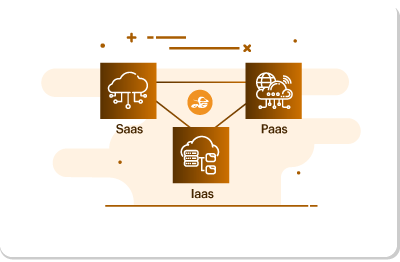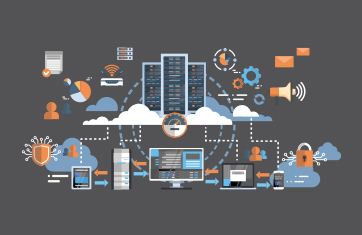Infrastructure as a Service (IaaS)
What is IaaS?
Infrastructure-as-a-Service (IaaS) is a form of cloud computing service that offers compute, storage and networking resources on-demand, usually on a pay-as-you-go basis. Businesses can purchase resources on-demand and as-needed instead of having to buy the hardware outright.
How does IaaS work?
While IaaS gives you virtualized resources such as servers, disks, networks, and IP addresses, you are still responsible for administering the operating system, data, applications, middleware and runtimes. A dashboard or an API gives you complete control over the entire infrastructure.
IaaS gives you the flexibility to purchase only the computing you need and scales them up or down as needed. If you are looking to migrate an application as-is from an on-premises data center to the cloud, choose the IaaS model. You will be able to proceed with the migration with minimum changes.
Because of its speed of deployment, IaaS is a quick and flexible way to build up and take down development and testing environments. Examples of IaaS include Rackspace, Amazon Web Services (AWS), Elastic Compute Cloud (EC2), Microsoft Azure, Google Compute Engine (GCE) and Joyent.
What are the benefits of IaaS?
- IaaS is advantageous when scalability and quick provisioning are key. Cloud Service Providers can provide a variety of hardware configuration with pre-configured operating systems such as Linux or Windows. You can also use rapid provisioning patterns with Infrastructure as Code (IaC) to create packages of IT resources that can be bundled and deployed into ready-made environments.
- Enables dynamic scaling – add capacity during peak times, scale down as needed.
- Eliminates the need for large CAPEX. Cloud service providers offer “pay as you use” pricing models where you only pay resources you use thus resulting in lower costs. If you stop a virtual machine, your billing is also stopped. This offers significant cost savings since you are billed only for actual utilization instead of traditional flat/fixed fees.
- Provisioning and deployment of resources are very simple.
- Eases the management of the environment with near-nil personnel as opposed to the on-premises infrastructure.
- Global infrastructure with edge locations around the world.
- You get service-level agreements from the cloud provider for standards of service.




